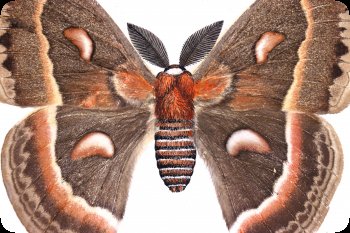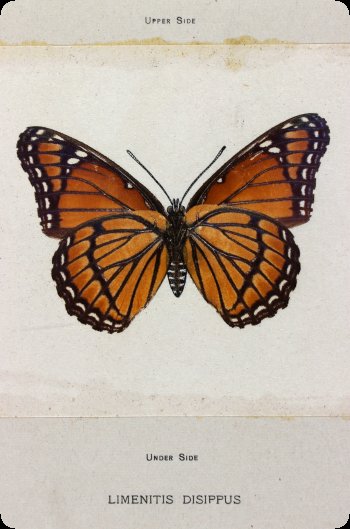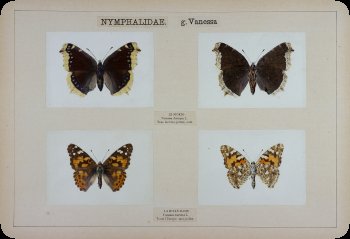Butterfly Transfer Prints
Today, anyone can share color photos of butterflies and moths by simply uploading them to social media. It wasn't so easy 120 years ago, when technology to capture color photographs and print the pictures on a page was in its infancy.
To bring colorful butterflies and moths to life on the page and produce the most accurate guides possible, naturalists in the late 19th and early 20th centuries preserved specimens by means of a process called lepidochromy. Simply put, it involved humidifying the wings and using papers prepared with an adhesive so that when the specimens were pressed between the papers, the scales on both sides of the wings would be preserved. The papers were then mounted to a plate or in a book, and the bodies were drawn in to provide detail.
The Illinois State Museum has a set of over 250 transfer prints of butterflies and moths that were collected primarily in France. We do not know the exact year or creator of these specimens. However, we do know the original owner of the prints purchased them through the mail from a bookseller in New Jersey in 1926. In addition to the prints, the Museum also has a three-volume set of books by Sherman F. Denton published in 1900 containing numerous additional prints.







